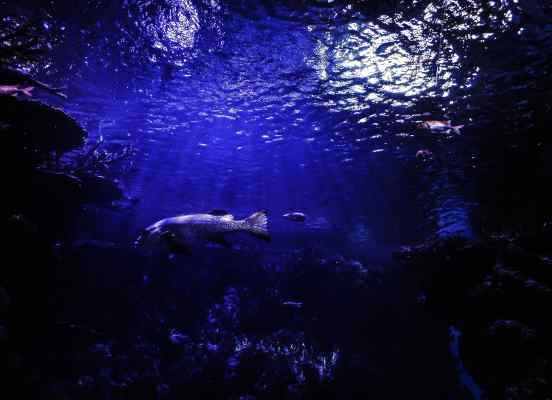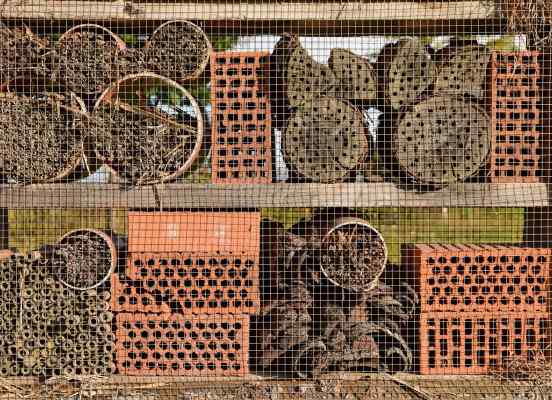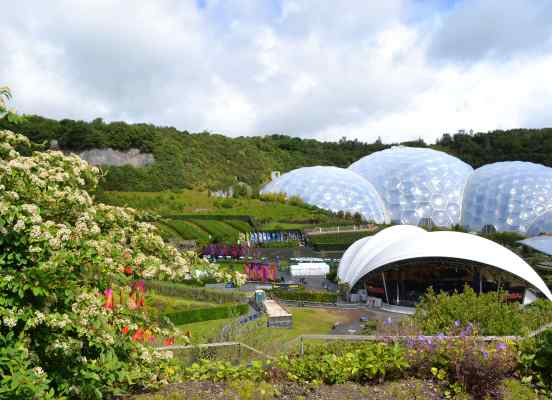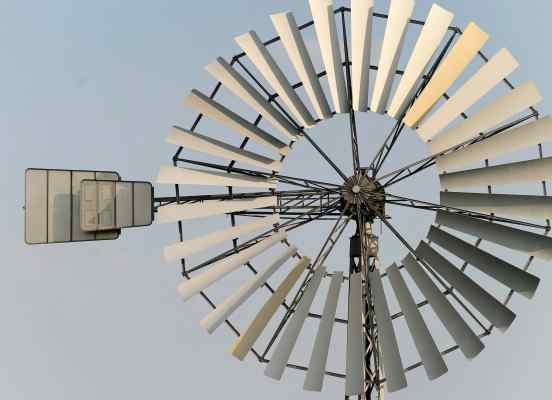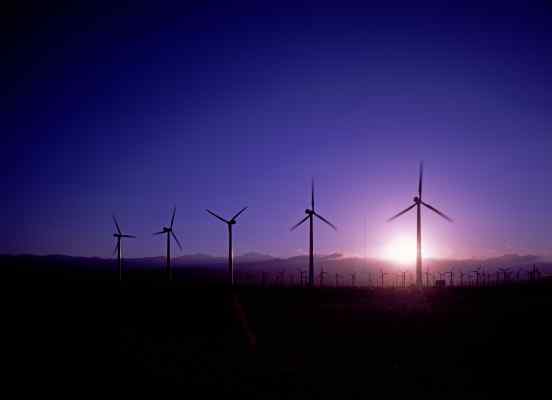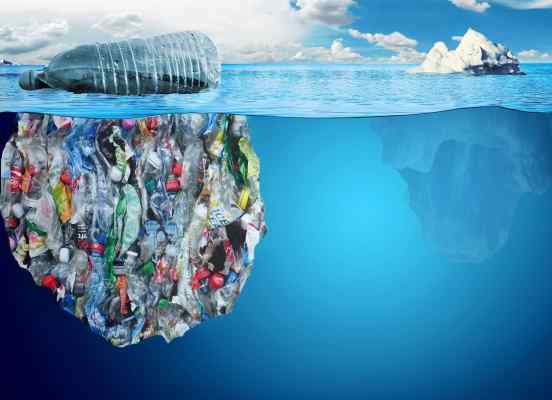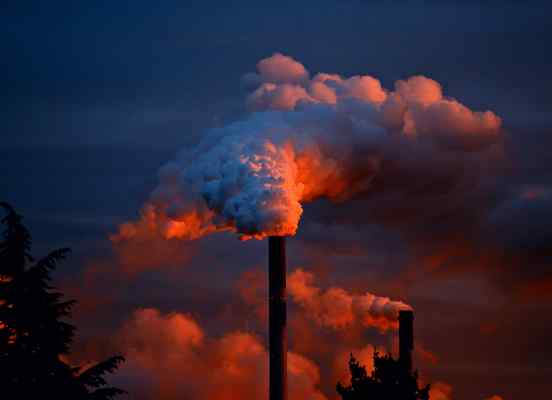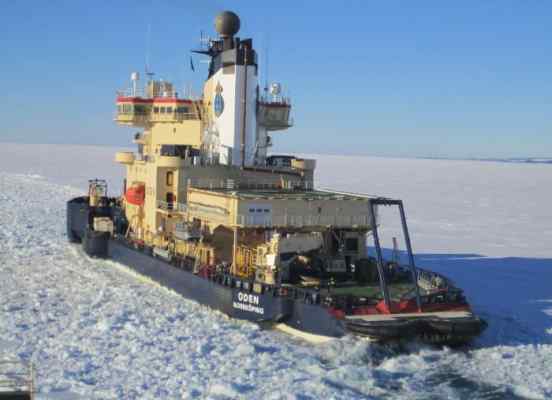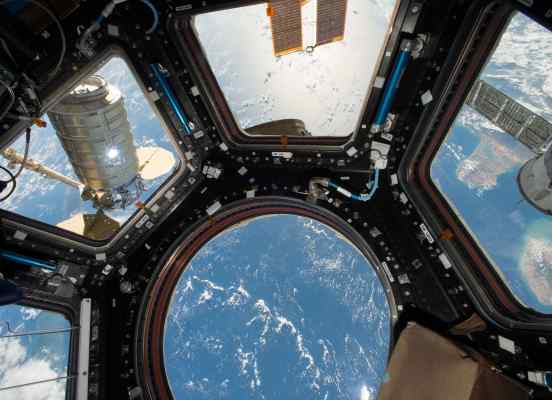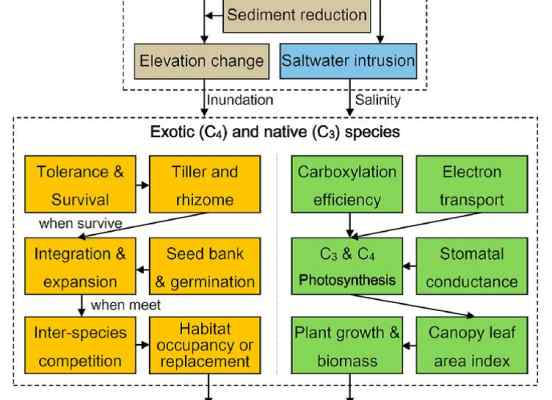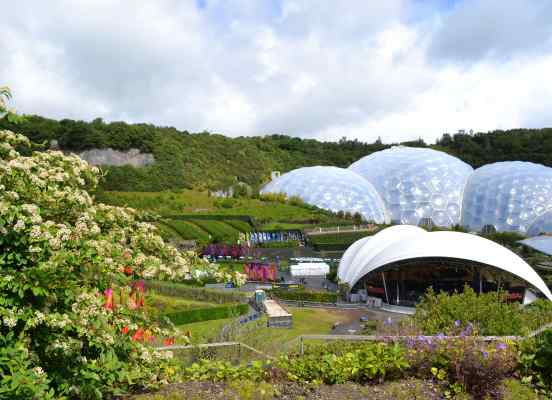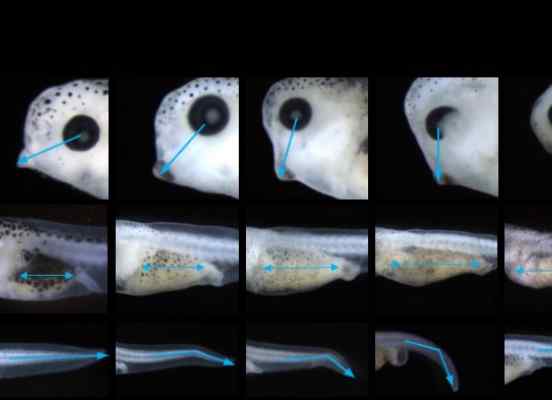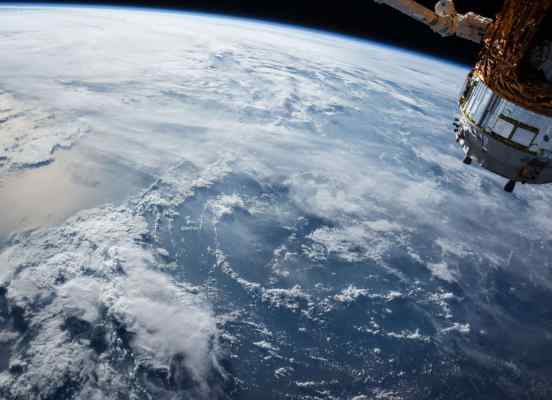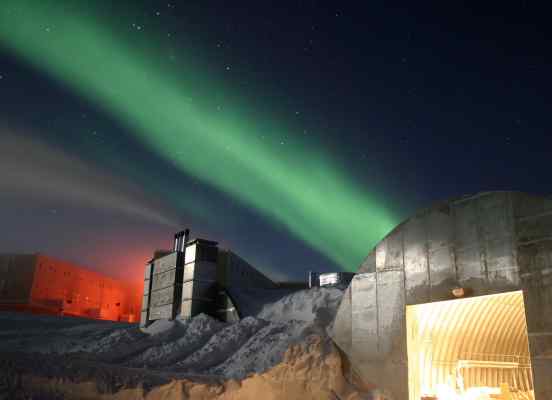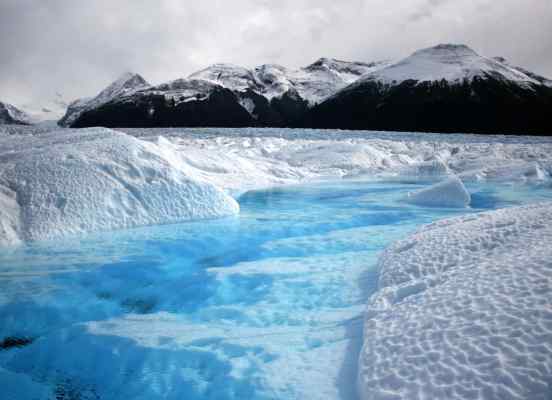Description
1.Project Summary
The East China Sea (including the shelf and coast) is home to strong physical and environmental gradients and the influence of the land-sourced perturbation extends long into the oceanic realm. The region is very productive and provides ocean services crucial both for food production but also for climate regulation. It is therefore both an important and excellent test-bed in which to develop an integrated observational and modelling capacity at SKLEC that builds on existing talents and yet incorporates new ideas and methodologies. This project will collect accessible existing data and new project measurements on physical, biogeochemical and biological systems and incorporate them into one dataset following international protocols. This will enable the present state of the East China Sea system to be evaluated. Importantly, the dataset will be used to set the boundary conditions for a new, coupled climate-biogeochemical-ecosystem modelling framework. Model representations of present and future regional and local variability in key ecological stressors will be used to guide perturbation experiments on important species and ecosystems. The scale of the ecosystem response to projected climate and environmental change will be used to develop a new management plan, in partnership with industrial and marine management end-users, to aid securement of a more productive and stable region. The project is designed to encourage the free-flow of information between disciplines in order to develop a more efficient transfer of knowledge. In doing so the project will quickly develop datasets of utility to the whole of China and the international research community. Through collaborations that ensue from this data sharing there will be a great increase in the scientific output of the project partners. The ambitious but necessary project has identified nine reports that are to be delivered as peer-reviewed scientific papers in leading journals.

Figure 1. The study area illustrating the strong coast and ocean connection. The seasonal and regional effects of eutrophication are clearly seen
2.Rationale and Background
As a consequence of large natural variability and unprecedented pressures from human activities, the ocean and coastal environments are undergoing rapid change (e.g. Cai et al., 2011; Lui et al., 2015). To manage system sustainability and to maximise ecosystem production, a better understanding of how coastal processes and ecosystems interact and respond to the multitude of climate, environmental and emerging stressors is required. A multitude of studies have identified that organisms and ecosystems are susceptible to significant change when exposed to e.g ocean warming, acidification, de-oxygenation, freshening and salination, eutrophication and nutrient starvation, ocean darkening, UV. However, there is concern that the experimental conditions have not be optimally applied to represent the true challenges faced by ecosystems and that proper experimental design is paramount (Hurd et al., 2015)
Cai, Wei-Jun Xinping Hu, Wei-Jen Huang, Michael C. Murrell, John C. Lehrter, Steven E. Lohrenz, Wen-Chen Chou, Weidong Zhai, James T. Hollibaugh, Yongchen Wang, Pingsan Zhao, Xianghui Guo, Kjell Gundersen, Minhan Dai & Gwo-Ching Gong. Acidification of subsurface coastal waters enhanced by eutrophication. Nature Geoscience 4, 766–770 (2011) doi:10.1038/ngeo1297
Hurd C. L., Cornwall C. E., Dupont S., Gattuso J.-P., Hoegh-Guldberg O., Gao K. & Lagos N. A., 2015. Ocean acidification: laboratory seawater studies are justified. Nature 525: 187.
Lui, H.-K., et al., Acidifying intermediate water accelerates the acidification of seawater on shelves: An example of the East China Sea. Continental Shelf Research (2015), http://dx.doi.org/10.1016/j.csr.2015.08.014i
3.Problem Statement and Research Questions
The coastal ocean is undergoing rapid change and yet the tools and understanding are not in place to produce the information required for environmental and ecosystem management and optimal resource exploitation. In order to attain this level of understanding the following research questions have been identified
- What are the natural, environmental and climate induced changes in the coastal ocean of Eastern China?
- Can observed changes be represented by integrated modeling efforts to emulate the recent past and present state and project future change?
- How will ecosystems respond to, and feedback on, the pressures from environmental and climate change?
- Can the new natural science knowledge be transferred to social and economic systems to develop efficient management strategies?
4.Overall and Specific Objectives
Objective
Using the case study of the East China Sea, to develop a world-class integrated coastal observational and modeling capacity at SKLEC that can be applied at the wider regional and global scales
Sub-goals
- To develop an integrated observational database for the East China Sea including shelf, coastal and estuaries
- To make new observations from sea going cruises and remote sensing
- To develop a new modeling capacity for the land-ocean interface
- To develop scenarios of key ecosystem pressures through an integrated observational and modeling framework
- To instigate and develop new dialogue and process with industrial and regional management institutions for sustained coastal management
5.Research Approach
Research will be organized through a works package format where information between WPs will be managed and guided though the workshops and deliveries identified in section 6.
WP1 Coastal and ocean observations and assessment of present state (Yunxuan Zhou, Fang Shen, Leonard Sokoletsky, Lei Gao, Qing Yuan, Hong Deng, Luan Zhu)
Here we will develop a database structure in-line with international protocols (e.g. GLODAP, SOCAT, GOA-ON) and populate it with available existing field and remotely sensed data and new data from dedicated project data from dedicated cruises and remote sensing. Variables will include but are not limited to temperature, salinity, oxygen, nutrients, organic nutrients, inorganic and organic carbon, total alkalinity, pH, omega, CDOM, PAR, pigments, phytoplankton, zooplankton, sedimentary biogeochemistry, pollutants. These data, once secured in the database will used to determine the present state across ranges of variability (diurnal, seasonal, inter-annual) and this knowledge will be delivered to: WP2 for model boundary conditions and model-data comparisons; WP3 for guiding contemporary variability for ecosystem experiments; and WP4 for identifying ecosystem health indicators.
WP2 A system in Change: scenarios of key drivers and stressors for the coastal ocean (Jianzhong Ge, Hui Wu, Yi Xu)
Here we will integrate existing and new modeling capacities through international collaboration (e.g. NIVA, PML) via the SKLEC-NIVA Centre for Coastal and Marine Research to couple models representing climate and biogeochemical change (e.g. ocean acidification, eutrophication, deoxygenation, darkening, organic loading) forcing (NORESM, COM, BFM), ocean physics(e.g. warming, freshening, windstress) (ROMS, FVCOM), ecosystems (ERSEM) and sediments (BROM), organism and individual pollution models. This new information will be provided to WP3 to guide experimental target values for organism perturbations and to WP4 for developing long-term strategies for ecosystem management.
WP3 Winner and losers: How will the ecosystem state change? (Quanxing Liu, Zhenming Ge, Xiuzhen Li)
Here we will integrate existing knowledge of ecosystem responses to climate and environmental change with new project knowledge from dedicated experiments on coastal organisms and ecosystems (e.g Plankton, benthic calcifiers, wetlands). The new knowledge from this WP will be used in WP4 for determining long-term strategies for ecosystem management. Ecosystem and organism responses will be used in parameterising process responses in WP2 and be used to focus observational strategies in WP1.
WP4. Integrated knowledge for better coastal management (Richard Bellerby)
Here we will develop new management strategies for ecosystem management through dialogue with end-users and managers. Thus will be built on recent developments in management directives but tailored to local requirements and opportunities. This WP will produce timelines for ecological stressors and risk maps and indicators. Outputs from WP will include identification of key industrial interests on ecosystems to target modeling and observational efforts in WP2 and WP1.
6.Project Schedule and Milestones

M1 Workshop held on observational data and database construction
M2 Workshop held on models and model coupling
M3 Workshop held on driver state of knowledge of drivers
M4 Workshop held with economists, industrialists and marine managers
M5 First cruise complete
M6 Workshop held on model parameterisations
M7 First lab experiments completed
M8 Second cruise completed
M9 Second lab experiments completed
M10 International meeting on coastal change, management and the blue economy
D1 First dataset delivered
D2 Report on model coupling
D3 Report on ecosystem change scenarios
D4 Report on sensitivity of couping strategies to scanarios
D5 Report on ecosystem change
D6 Final database delivered
D7 Report on climate change response of coastal ocean
D8 Report on new management guidelines for coastal ocean
D9 Report on coastal ecosystem change
D10 Report on new modelling capacity
D11 Report on observed coastal ocean transitions
7.Anticipated Outputs
This project will promote a new integrated approach to system research at SKLEC. It will deliver crucial data for understanding coastal and ocean systems and firmly propel Chinese research into the large international database projects. The new modelling capability will enable SKLEC to understand complex environments and deliver projections of future change. Interactions with industrial and management end-users will target research towards developing the blue-green economy. This interdisciplinary approach will provide an excellent learning environment for the new project students and postdocs preparing them for high level international research. The project will also deliver many high level scientific papers.
8.CV of Principal Investigator and Partners
Project coordinator
RICHARD Garth James BELLERBY
Director, SKLEC-NIVA Centre for Marine and Coastal Climate Research, State Key Laboratory for Estuarine and Coastal Research, East China Normal University
Senior Researcher and Research Coordinator Norwegian Institute for Water Research
Bellerby is a marine biogeochemist studying the ocean carbon cycle and climate change feedbacks through observations and modelling. He has over 100 peer reviewed publications. He is leader of the NIVA research group on ocean acidification and coordinator of biogeochemistry research. He is on the Scientific Steering Committee on the SCOR/IGBP Integrating Climate and Ecosystem Dynamics working group. He chairs both the AMAP and SCAR Research Groups on Arctic and Antarctic Ocean Acidification. His research is towards on an understanding of the response and feedback of ocean carbon biogeochemistry and ecosystems to climate variability. The overall philosophy of the science is to investigate marine elemental cycling using relationships and combined feedbacks from the physical environment (CO2 gas exchange, transport, water mass transformations) with those of biogeochemical (marine stoichiometry, redox) and of biological nature (planktonic systems, energy flow). Through this combined approach it is then possible to begin to understand how marine systems will evolve and influence global ecosystems and carbon biogeochemical cycling and thus climate. His approach is to use interpretations of the natural ocean system from ocean going expeditions, in situ observation platforms, ocean models and global datasets; deliberate perturbation experiments taking the natural ocean out of its contemporary framework and regional coupled physical-chemical-ecosystem and global ocean models.
Recent and On-going research projects:
EU COST 735: Tools for Assessing Global Air–Sea Fluxes of Climate and Air Pollution Relevant Gases. [National delegate on management committee. Leader of WG1 "Short-lived trace gas production and biological feedbacks".]
EU Framework VI: CARBOOCEAN. . [PI.] Global biogeochemical cycles
Norwegian Research Council: [Coordinator.] Southern Ocean Biogeochemistry and Research (SOBER).
Norwegian Research Council: IPY Bi-Polar Atlantic Circulation (BIAC) [Project Manager, PI and WG leader]
Bjerknes SFF: PAME. [PI.] Polar Aquatic Marine Ecology
EU Framework VII: EPOCA. [PI.] European Study of Ocean Acidification
EU Framework VII: MEECE. [Steering Committee Member, Lead PI and WG leader] Marine Ecosystem Evolution in a Changing Environment
EU ITN CALMARO. [PI.]Calcification by Marine Organisms
Norwegian Research Council NORKLIMA: MERCLIM. [Coordinator]. Marine Ecosystem Response to a Changing Climate
EU Framework VII: SENSENET. [Lead PI] Development of new sensors for oceanic measurement
EU Framework VII: EUROBASIN. [Lead PI] North Atlantic Biological Pump Carbon Cycle
EU Framework VII: GreenSeas. [Lead PI] Plankton response to environmental and climate change
EU Framework VII: ECO2 [WP leader, Lead PI and SSC member] Sub-seabed CO2 Storage: Impact on Marine Ecosystems
PhD Student supervision
2004-2007. Biogeochemistry of the Nordic Seas and the Barents Sea. Caroline Kivimæ,
2005-2010. A study of the High and Mid-latitude Biogeochemistry in the Atlantic Ocean: the influence of surface processes. Gisle Nondal,
2008-2012. Deep-water formation in the Barents Sea related to regional sea-ice formation and CO2 uptake. Marius Årthun,
2008-2012 Carbon to nutrient ratios in marine systems: understanding natural variability Studies of seasonal, inter-annual and regional variability, Helene Frigstad,
2008-2013 Arctic Marine Biogeochemical cycling under climate change and ocean acidification, Anna Silyakova
2009-2013 Development of a miniaturised sensor for marine pH. Victoire Rerolle
Relevant Publications from the last 5 years
C. J. Daniels, A. J. Poulton, M. Esposito, M. L. Paulsen, R. Bellerby, M. St. John, and A. P. Martin Phytoplankton dynamics in contrasting early stage North Atlantic spring blooms: composition, succession, and potential drivers. Biogeosciences Discuss., 12, 93-133, 2015
P. E. Land, Jamie D. Shutler, Helen S. Findlay, Fanny Girard-Ardhuin, Roberto Sabia, Nicolas Reul, Jean-Francois Piolle, Bertrand Chapron, Yves Quilfen, Joseph Salisbury, Douglas Vandemark, Richard Bellerby, and Punyasloke Bhadury Salinity from Space Unlocks Satellite-Based Assessment of Ocean Acidification. 2015. Environmental Science & Technology 49 (4), 1987-1994 DOI: 10.1021/es504849s
E. Jeansson, Bellerby, R. G. J., Skjelvan, I., Frigstad, H., Ólafsdóttir, S. R., and Olafsson, J.: Fluxes of carbon and nutrients to the Iceland Sea surface layer and inferred primary productivity and stoichiometry, Biogeosciences, 12, 875-885, doi:10.5194/bg-12-875-2015, 2015.
AK Pavlov, A Silyakova, MA Granskog, RGJ Bellerby, A Engel, KG Schulz, Marine CDOM accumulation during a coastal Arctic mesocosm experiment: No response to elevated pCO2 levels. Journal of Geophysical Research: Biogeosciences. 06/2014; 119. DOI: 10.1002/2013JG002587
R.G.J. Bellerby, Miller L., Croot P., Anderson L., Azetsu-Scott K., McDonald R., Steiner A. and Olafsson J., 2014. Acidification of the Arctic Ocean. In: Arctic Ocean Acidification Assessment, Arctic Monitoring and Assessment Programme, (AMAP), Oslo.
C. L. Sabine, S. Hankin, H. Koyuk, D. C. E. Bakker, B. Pfeil, A. Olsen, N. Metzl, A. Kozyr, A. Fassbender, A. Manke, J. Malczyk, J. Akl, S. R. Alin, R. G. J. Bellerby, et al., 2014. Surface Ocean CO2 Atlas (SOCAT) gridded data products. Earth System Science Data. 07/2013; 5:145-153.
B. Pfeil, A. Olsen, D. C. E. Bakker, S. Hankin, H. Koyuk, A. Kozyr, J. Malczyk, A. Manke, N. Metz, C. L. Sabine, J. Akl, S. R. Alin, N. Bates, R. G. J. Bellerby, et al.,, 2014. A uniform, quality controlled Surface Ocean CO2 Atlas (SOCAT). Earth System Science Data. 07/2013; 5:125-143.
Y. Artioli, J. C. Blackford, G. Nondal, R. G. J. Bellerby, S. L. Wakelin, J. T. Holt, M. Butenschön, J. I. Allen, 2014. Heterogeneity of impacts of high CO2 on the North Western European Shelf. Biogeosciences Discussions 06/2013; 10(6):9389-9413.
M. Losch, V. Strass, B. Cisewski, C. Klaas, R. G. J. Bellerby. 2014. Ocean state estimation from hydrography and velocity observations during EIFEX with a regional biogeochemical ocean circulation model. Journal of Marine Systems 01/2014
H. Frigstad, T. Andersen, R. G.J. Bellerby, A. Silyakova, D. O. Hessen, 2014. Variation in the seston C:N ratio of the Arctic Ocean and pan-Arctic shelves. Journal of Marine Systems, 01/2014; 129:214–223. DOI:10.1016/j.jmarsys.2013.06.004
V. M C Rérolle, C. F A Floquet, A. J K Harris, M. C Mowlem, R. G J Bellerby, E. P Achterberg, 2014. Development of a colorimetric microfluidic pH sensor for autonomous seawater measurements. Analytica chimica acta 07/2013; 786:124-31
FE Hopkins, SA Kimmance, JA Stephens, RGJ Bellerby, CPD Brussaard, J Czerny. Response of halocarbons to ocean acidification in the Arctic. Biogeosciences 10 (4), 2331-2345, 2013.
A. Engel, C. Borchard, J. Piontek, K. G. Schulz, U. Riebesell, and R. Bellerby. CO2 increases 14C primary production in an Arctic plankton community Biogeosciences, 10, 1291-1308, 2013
T. Tanaka, S. Alliouane, R. G. J. Bellerby, J. Czerny, A. de Kluijver, U. Riebesell, K. G. Schulz, A. Silyakova, and J.-P. Gattuso Effect of increased pCO2 on the planktonic metabolic balance during a mesocosm experiment in an Arctic fjord Biogeosciences, 10, 315-325, 2013
K. G. Schulz, R. G. J. Bellerby, C. P. D. Brussaard, J. Büdenbender, J. Czerny, A. Engel, M. Fischer, S. Koch-Klavsen, S. A. Krug, S. Lischka, A. Ludwig, M. Meyerhöfer, G. Nondal, A. Silyakova, A. Stuhr, and U. Riebesell. Temporal biomass dynamics of an Arctic plankton bloom in response to increasing levels of atmospheric carbon dioxide Biogeosciences, 10, 161-180, 2013
H. Frigstad, T. Andersen, D. O. Hessen, E. Jeansson, M. Skogen, L-J. Naustvoll, M.W. Miles, T. Johannessen, R.G.J. Bellerby Long-term trends in carbon, nutrients and stoichiometry in Norwegian coastal waters: Evidence of a regime shift Original Research Article Progress in Oceanography, Volume 111, April 2013, Pages 113–124.
R. G. J. Bellerby, A. Silyakova, G. Nondal, D. Slagstad, J. Czerny, T. de Lange, and A. Ludwig. Marine carbonate system evolution during the EPOCA Arctic pelagic ecosystem experiment in the context of simulated Arctic ocean acidification. Biogeosciences Discuss., 9, 15541-15565, 2012
S. D. Archer, S. A. Kimmance, J. A. Stephens, F. E. Hopkins, R. G. J. Bellerby, K. G. Schulz, J. Piontek, and A. Engel Contrasting responses of DMS and DMSP to ocean acidification in Arctic waters Biogeosciences Discuss., 9, 12803-12843, 2012
J Czerny, KG Schulz, T Boxhammer, RGJ Bellerby, J Büdenbender, A Engel, Implications of elevated CO2 on pelagic carbon fluxes in an Arctic mesocosm study–an elemental mass balance approach. Biogeosciences (BG) 10 (5), 3109-3125
A Silyakova, RGJ Bellerby, KG Schulz, J Czerny, T Tanaka, G Nondal, U. Riebesell. Pelagic community production and carbon-nutrient stoichiometry under variable ocean acidification in an Arctic fjord. Biogeosciences 10 (7), 4847-4859, 2013.
Victoire M.C. Rérolle, Cedric F.A. Floquet, Matt C. Mowlem, Douglas P. Connelly, Eric P. Achterberg, Richard R.G.J. Bellerby Seawater-pH measurements for ocean-acidification observations Review Article TrAC Trends in Analytical Chemistry, Volume 40,November 2012, Pages 146-157
Manno C., N. Morata, and R. G. J Bellerby. 2012. Effect of ocean acidification and temperature increase on foraminifera Neogloboquadrina pachyderma sinistral. Polar Biology., DOI 10.1007/s00300-012-1174-7
Årthun M., Bellerby R.G.J. and Schrum C., 2012. Spatiotemporal variability of air–sea CO2 fluxes in the Barents Sea, as determined from empirical relationships and modeled hydrography, J. Mar.,Syst. 98-99, 40-50.,
Rintoul, S. Sparrow, M., Meredith, M., Wadley, V., Speer, K, Hofmann, E., Summerhayes, C., Urban, E., Bellerby, R., et al. (2012): The Southern Ocean observing system: Initial science and implementation strategy, Editors; Rintoul, S. Sparrow, M., Meredith, M., Wadley, V., Speer, K, Hofmann, E., Summerhayes, C., Urban, E., Bellerby, R., SCAR and SCOR, 74 p., ISBN: 978-0-948277-27-6 .
Frigstad H, Andersen T., Hessen D.O. and Bellerby R.G.J., 2011. Seasonal variability in seston elemental composition: Redfield ratio maintained by balancing sestonic fractions. Biogeosciences, 8, 2917-2933
Berg G.M., Mills M.M., Long M. C., Bellerby R.G.J., Strass V., Savoye N., Röttgers R., Croot P.L., Webb A. and. Arrigo K.R., Variation in particulate C and N isotope composition following iron fertilization in two successive phytoplankton communities in the Southern Ocean. Global Biogeochem. Cycles, Vol. 25, No. 3, GB3013, 2011.
Montiero P.M.S., Boyd P. And Bellerby R.G.J., 2011. Role of the Seasonal Cycle in Coupling Climate and Carbon Cycling in the Subantarctic Zone, EOS Trans. Am. Geophys. Union, 92 (28), 235-236
Jeansson E., Olsen A., Eldevik T., Skjelvan I., Omar A M., Lauvset S K., Nilsen J E Ø., Bellerby R G. J., Johannessen T., Falck, E. 2011.The Nordic Seas carbon budget: Sources, sinks, and uncertainties. Global Biogeochem. Cycles, Vol. 25, No. 4, GB4010
A. de Kluijver, K. Soetaert, K. G. Schulz, U. Riebesell, R. G. J. Bellerby, and J. J. Middelburg Phytoplankton-bacteria coupling under elevated CO2 levels: a stable isotope labelling study Biogeosciences, 7, 3783-3797, 2010
Bellerby R.G.J., Ocean acidification. 2010. Physical and Boogeochemical processes; Climate Change in the Norwegian Arctic – NORACIA interim report ( Havforsuring. Fysiske og biogeokjemiske prosesser; Klimaendringer i norsk Arktis, – NorACIA delutredning) Eds: Kim Holmén og Winfried Dallmann
Kivimæe C., Bellerby R.G.J., Fransson A., Reigstad M and Johannessen T. A carbon budget for the Barents Sea Deep-Sea Research I, Volume 57, Issue 12, December 2010, Pages 1532-1542
Nisumaa A.-M., Pesant S., Bellerby R. G. J., Middelburg J., Orr J. C., Riebesell U., Tyrrell T., Wolf-Gladrow D. & Gattuso J.-P., 2010. EPOCA/EUR-OCEANS data-mining compilation on the impacts of ocean acidification. Earth System Science Data Discussions3: 109-130
Hoppema, M., Velo, A., van Heuven, S., Tanhua, T., Key, R. M., Lin, X., Bakker, D. C. E., Perez, F. F., Ríos, A. F., Lo Monaco, C., Sabine, C. L., Álvarez, M., and Bellerby, R. G. J. 2010: Consistency of cruise data of the CARINA database in the Atlantic sector of the Southern Ocean, Earth Syst. Sci. Data, 1, 63-75
Breitbarth E., Bellerby R.G.J., Neill C., Ardelan M. V., Meyerhöfer M., Zöllner E., Croot P. L. and Riebesell U., 2010. Ocean acidification increases bioavailability of iron, Biogeosciences, 7, 1065-1073
Hauck J., Hoppema M., Bellerby R.G.J. Volker C., and Wolf-Gladrow D., Observations of acidification in the Weddell Sea on a decadal time scale, J. Geophys. Res., 115, C03004, doi:10.1029/2009JC005479
Jutterström, S., Anderson, L. G., Bates, N. R., Bellerby, R.G.J., Johannessen, T., Jones, E. P., Key, R. M., Lin, X., Olsen, A., and Omar, A. M., 2010. Arctic Ocean data in CARINA, Earth Syst. Sci. Data, 2, 71-78.
Olsen, A., Omar A. M.,. Jeansson E, Anderson L. G., and Bellerby R. G. J., 2010, Nordic seas transit time distributions and anthropogenic CO2, J. Geophys. Res., 115, C05005, doi:10.1029/2009JC005488
Yunxuan Zhou, Professor of GIS and Remote Sensing.
Research interests:
Remote sensing and Geographic Information Systems (GIS) applied in estuaries and coasts with focus on water color, wetland, and morphology; and coastal zone LUCC studies.
Education:
1983, Changchun Geological Institute, BSc.
1988, International Institute for Aerospace Survey and Earth Sciences (ITC), the Netherlands, MSc.
1992, Delft University of Technology (DUT), PhD.
Work experience
1983-2000, Changchun Geological Institute (Changchun University of Science and Technology), as assistant professor, associate professor and professor.
1999-2003, Changchun Institute of Geography, Chinese Academy of Sciences, professor.
2000-2007, Jilin University, professor.
2002-present, East China Normal University, professor.
Professional memberships:
Member, American Geophysical Union (AGU), 2013-
Member, The Chinese Scientific Committee on Oceanic Research (SCOR, China), 2011 – 2015
Member, National Expert Committee of Wetland Science and Technology, 2009 - 2018
Journal Editorial board member:
Ocean & Coastal Management, 2011 – 2015
Frontiers of Earth Science, 2008 – 2015, Associate Editor (2013 – 2015)
Related Publications in English:
Wang Lihua, Zhou Yunxuan, Ge Jianzhong, Johnny A Johannessen, Shen Fang, 2014. Mapping sea surface velocities in the Yangtze coastal zone with ASAR. Acta Oceanologica Sinica. 33(11):141-149
Fang Shen, Yunxuan Zhou, Xiangyi Peng, Yuli Chen, 2014. Satellite multi-sensor mapping of suspended particulate matter in turbid estuarine and coastal ocean, China. International Journal of Remote Sensing. 35(11-12):4173-4192
Xing Li, Yunxuan Zhou, Lianpeng Zhang, Runyuan Kuang, 2014. Shoreline change of Chongming Dongtan and response to river sediment load: A remote sensing assessment. Journal of Hydrology, 511:432-442
Wang Lihua, Zhou Yunxuan, Zhu Jianrong, Shen Fang, Tianbo, 2014. Deriving Changjiang coastal zone wind from C-band SAR and its application to salinity simulation. Chinese Journal of Oceanology and Limnology. 32(4):946-957
Shen, F., Zhou, Y.X., Li, J.F., He, Q., Verhoef, W. 2013. Remotely sensed variability of the suspended sediment concentration and its response to decreased river discharge in the Yangtze estuary and adjacent coast. Continental Shelf Research. 69:52-61
Fang Shen, Wouter Verhoef, Yunxuan Zhou, Mhd. Suhyb Salama, and Xiaoli Liu, 2010. Satellite estimates of wide-range suspended sediment concentrations in Changjiang (Yangtze) estuary using MERIS data. Estuaries and Coasts. 33(6): 1420-1429.
Fang Shen, M.S. Salama, Y. X. Zhou, J. F. Li, Z. Su and D. B. Kuang, 2010. Remote-sensing reflectance characteristics of highly turbid estuarine waters – a comparative experiment of the Yangtze River and the Yellow River. Int. J. of Remote Sensing. 31(10): 2639–2654.
Fang Shen, Yunxuan Zhou, Daoji Li, Weijian Zhu, MhD Shuhyb Salama, 2010. MERIS estimation of chlorophyll-a concentration in the turbid sediment-laden waters of the Changjiang (Yangtze) Estuary. Int. J. of Remote Sensing. 31(17-18):4635-4650
Bo Tian, Liquan Zhang, Xiangrong Wang, Yunxuan Zhou, Wen Zhang, 2010. Forecasting the effects of sea-level rise at Chongming Dongtan Nature Reserve in the Yangtze Delta, Shanghai, China. Ecological Engineering, 36(10):1383-1388
Shen Fang, Zhou Yunxuan, Li Jiufa, and Liu Xiaoli, 2009. Theoretic analysis and experimental observation for the effect of suspended sediment particle size on remote-sensing reflectance (in Chinese). J. Infrared Millim. Waves. 28(3):168-172.
Bo Tian, Yunxuan Zhou, Liquan Zhang, Lin Yuan, 2008, Analyzing the habitat suitability for migratory birds at the Chongming Dongtan Nature Reserve in Shanghai, China, Estuarine, Coastal and Shelf Science, 80(2):296-302
Lei Gao, Associate Professor
Research Interests:
Nutrient Biogeochemistry in Estuarine and Coastal Areas
Education Experience:
2001.9-2007.2: PhD, East China Normal University
Work Experience:
2007.3-2009.5: Postdoctoral Fellow, Tongji University
2009.6-2011.12: Assistant Professor, East China Normal University
2012.1-present: Associate Professor, East China Normal University
2012.12-2013.12: Visiting Scholar, University of Wisconsin-Milwaukee
Selected Publications:
Gao, L., D. Li, J. Ishizaka, Y. Zhang, H. Zong, L. Guo, in press. Nutrient dynamics across the river-sea interface in the Changjiang (Yangtze River) Estuary – East China Sea region. Limnology and Oceanography.
Gao, L., D. Li, J. Ishizaka, 2014. Stable isotope ratios of carbon and nitrogen in suspended organic matter: Seasonal and spatial dynamics along the Changjiang (Yangtze River) transport pathway. Journal of Geophysical Research 119, 1717-1737.
Gao, L., D. Li, Y. Zhang, 2012. Nutrients and particulate organic matter discharged by the Changjiang (Yangtze River): Seasonal variations and temporal trends. Journal of Geophysical Research 117, G04001.
Gao, L., D. Fan, Y. Zhang, D. Li, J. Cai, 2011. Tracing the quarter-diurnal signatures of nutrients and dissolved organic matter to evaluate their non-conservative behaviors in coastal seawaters. Journal of Geophysical Research 116, G03015.
Gao, L., D. Fan, C. Sun, D. Li, J. Cai, 2011. Optical characterization of CDOM in a marsh-influenced environment in the Changjiang (Yangtze River) Estuary. Environmental Earth Sciences 64, 643–658.
Gao, L., D. Fan, D. Li, J. Cai, 2010. Fluorescence characteristics of chromophoric dissolved organic matter in shallow water along the Zhejiang coasts, southeast China. Marine Environmental Research 69, 187–197.
Gao, L., D. Li, P. Ding, 2009. Quasi-simultaneous observation of currents, salinity and nutrients in the Changjiang (Yangtze River) plume on the tidal timescale. Journal of Marine Systems 75, 265–279.
Gao, L., D. Li, P. Ding, 2008. Variation of nutrients in response to the highly dynamic suspended particulate matter in the Changjiang (Yangtze River) plume. Continental Shelf Research 28, 2393–2403.
Gao, L., D. Li, P. Ding, 2008. Nutrient budgets averaged over tidal cycles off the Changjiang (Yangtze River) Estuary. Estuarine, Coastal and Shelf Science 77, 331–336.
Jianzhong Ge, Assistant Professor.
Research Interests:
Numerical Modeling of Hydrodynamics and Sediment Transport; Visualization System and High-Performance Computing
Education Experience:
Ph.D., ECNU (2011)
Work Experience:
Visiting Scholar, University of Massachusetts-Dartmouth, United States (2007-2009; 2015-2016)
Assistant Researcher, ECNU (2011-)
Selected Papers:
Ge, J., P. Ding & C. Chen (2015). Low-Salinity Plume Detachment Under Non-uniform Summer Wind off the Changjiang Estuary, Estuarine, Coastal and Shelf Science, http://dx.doi.org/10.1016/j.ecss.2014.10.012
Ge, J., Ding, P., Chen, C., Hu, S., Fu, G., & Wu, L. (2013). An integrated East China Sea–Changjiang Estuary model system with aim at resolving multi-scale regional–shelf–estuarine dynamics. Ocean Dynamics, 63(8), 881–900. doi:10.1007/s10236-013-0631-3
Ge, J., Much, D., Kappenberg, J., Nino, O., Ding, P., & Chen, Z. (2013). Simulating storm flooding maps over HafenCity under present and sea level rise scenarios. Journal of Flood Risk Management. doi:10.1111/jfr3.12054
Ge, J., Chen, C., Qi, J., Ding, P., & Beardsley, R. C. (2012). A dike-groyne algorithm in a terrain-following coordinate ocean model (FVCOM): Development, validation and application. Ocean Modelling, 47(C), 26–40. doi:10.1016/j.ocemod.2012.01.006
Ge, J., P. Ding and C. Chen, (2010), Impacts of Deep Waterway Project on Local Circulations and Salinity in the Changjiang Estuary, China, Proceedings of the 31st International Conference of Coastal Engineering 2010, Shanghai, China
Zhao, C.; Ge, J., and Ding, P., 2014. Impact of sea level rise on storm surges in the Changjiang Estuary, Journal of Coastal Research, Special Issue, No. 66, pp. 7-14. Coconut Creek (Florida), ISSN 0749-0208
Li, M., Ge, J., Kappenberg, J., Much, D., Nino, O., & Chen, Z. (2013). Morphodynamic processes of the Elbe River estuary, Germany: the Coriolis effect, tidal asymmetry and human dredging. Frontiers of Earth Science. doi:10.1007/s11707-013-0418-3
Hui Wu, Associate Professor
Research Interests:
River plume dynamics under tidal effect; Numerical methods
Education Experience:
1997.9-2001.7 Department of Mathematics, East China Normal University, Bachelor degree
2001.9-2006.7 State Key Laboratory of Estuarine and Coastal Research, East China Normal University, Ph.D.
Work Experience:
2012.1 - State Key Laboratory of Estuarine and Coastal Research, East China Normal University, associate professor
2006.7 - 2011.12 State Key Laboratory of Estuarine and Coastal Research, East China Normal University, assistant professor
International Activities :
2014.8 - 2015.7 Visiting scientist at Department of Oceanography, Texas A&M University, USA
2010.9 - 2011.8 Visiting scientist at Virginia Institute of Marine Science, VA, US.
Selected Papers:
Wu, H., 2015. Cross-shelf penetrating fronts: A response of buoyant coastal water to ambient pycnocline undulation, J. Geophys. Res., doi:10.1002/2014JC010686.
Wu, H., Shen, J., Zhu, J., Zhang, J., Li, L., 2014. Characteristics of the Changjiang plume and its extension along the Jiangsu Coast. Cont. Shelf Res., 76,102-123.
Wu, H., Deng, B., Yuan, R., Hu, J., Gu, J., Shen, F., Zhu, J., Zhang, J., 2013, De-tiding measurement on transport of the Changjiang-derived buoyant coastal current, J. Phys. Oceanogr. 43(11), 2388-2399.
Wu, H., Zhu, J., Shen, J., and Wang, H., 2011. Tidal modulation on the Changjiang River Plume in summer, J. Geophys. Res., 116, C08017.
Wu, H., Zhu, J., 2010. Advection scheme with 3rd high-order spatial interpolation at the middle temporal level and its application to saltwater intrusion in the Changjiang Estuary. Ocean Modell., 33, 33–51.
Wu, H., Zhu, J., and Choi, B.H., 2010. Links between saltwater intrusion and subtidal circulation in the Changjiang Estuary: A model-guided study. Cont. Shelf Res., 30, 1891-1905.
Wu, H., Zhu, J., Chen, B.R., Chen, Y.Z., 2006. Quantitative relationship of runoff and tide to saltwater spilling over from the North Branch in the Changjiang Estuary: A numerical study. Est. Coast. Shelf Sci. 69, 25–132.
Li, L., Wu, H., Liu, J.T., and Zhu, J., 2015. Sediment transport induced by advection of a moving salt wedge in the Changjiang Estuary, Journal of Coastal Research, 31(3), 671-679.
Yuan, R., Wu, H., Zhu, J., Li, L., 2015. The response time of the Changjiang plume to river discharge in summer. J. Marine Syst. doi: 10.1016/j.jmarsys.2015.04.001.
Yi Xu, Deputy Executive Officer, Regional Project Office of IMBER.
Education
2006-2012, Ph.D., Institute of Marine and Coastal Sciences, Rutgers University, New Brunswick, New Jersey
2003-2006, M.S., First Institute of Oceanography, Key Laboratory of Marine Science and Numerical Modeling, Qingdao, China
1999-2003, B.S., Atmospheric Science, Ocean University of China, Qingdao, China.
Research experience
2014.4 – pre. Postdoctoral Research Associate (Ruoying He) Department of Marine, Earth &
Atmospheric Sciences, North Carolina State University
2013.1 –2014.4 Postdoctoral Research Associate (Research Mentor: Scott M. Glenn) Coastal
Ocean Observations Lab, Rutgers University
2006.9 – 2012.12 Research Assistant (Doctoral advisor: Oscar M. Schofield) Coastal Ocean Observations Lab, Rutgers University
2004 – 2006 Research assistant (Advisor: Fei Yu) Key Laboratory of Marine Sciences and Numerical Modeling, First Institute of Oceanography, P. R. China
2003 Research Assistant, Ocean University of China
Publications
Y. Xu, Schofield, O., and Glenn, S. 2013. Dynamics of the summer hurricane induced heat balance and circulation in the Mid-Atlantic Bight, Journal of Geophysical Research – Oceans, to be submitted.
Y. Xu, Chant, R., and Schofield, O., 2012. Decadal Variability of Climate and Phytoplankton Bloom in the Mid-Atlantic Bight. Geophysical Research Letters, to be submitted.
Y. Xu, Cahill, B., Wilkins, J., and Schofield, O., 2012. Role of wind in regulating phytoplankton bloom on the Mid-Atlantic Bight. Continental Shelf Research, doi:10.1016/j.csr.2012.09.011.
Y. Xu, Robert Chant, Donglai Gong, Renato Castelao, Scott Glenn and Oscar Schofield, 2011. Seasonal variability of chlorophyll a in the Mid-Atlantic Bight. Continental Shelf Research doi:10.1016/j.csr.2011.05.019.
Y. Xu, F. Yu, X. Zhang, 2005. Diagnostic Calculation of Yellow Sea Warm Current in winter. Advance in Marine Science, 23(4): 398-407.
Glenn, S. M., Schofield, O., Miles, T. N, Seroka, G. N., Xu, Y., Roarty, H., Kohut, J., 2015. Rapid Ahead-of-eye Coastal Ocean Cooling and Feedback on Tropical Cyclone Intensity. Nature Communications, in revision.
Oscar Schofield, Hugh Roarty, Grace Saba, Xu Yi, Josh Kohut, Scott Glenn 2012. Phytoplankton dynamics and bottom water oxygen during a large bloom in the summer of 2011. Oceans, 10.1109/OCEANS.2012.6405078.
Schofield, O., R. Chant, B. Cahill, R. Castelao, D. Gong, J. Kohut, M. Montes-Hugo, R. Ramanduri, Y. Xu, and S. Glenn, 2008. The decadal view of the Mid-Atlantic Bight from the COOLroom: Is our coastal system changing? Oceanography, 21, 108 – 117.
Schofield, O., Kohut, J., Saba, G., Xu, Y., Wilkin, J., Glenn, S. M. Ocean observing and prediction. 2014. In Encyclopedia of Natural Resources. Wang, Y. Q. (editor). Taylor Francis, New York City, NY. Doi:10.1018/E-ENRW-120048087
Yu F., Y. Xu, 2003. Study of Long-term Variational Trend of Sea Surface Temperature in the East China Sea. Advance in Marine Science, 21(4): 477-481.
Quanxing Liu, Professor of Ecology.
Research Interests:
Marine Ecology, Plankton bloom and biodiversity
Spatial self-organization patterns in ecosystems
Collective behavior of animals
Numerical computations with CUDA (GPU)
Education Experience:
2009.03-2013.03—Ph.D., Ecology, Royal Netherlands Institute for Sea Research (NIOZ)-Yerseke & University of Groningen, The Netherlands.
2006.08-2009.03—M.S, Mathematics, North University of China, Taiyuan, China.
2002.08-2006.06—B.S, Chemistry, North University of China, Taiyuan, China.
Work Experience:
2015.01-present— Professor, State Key Laboratory of Estuarine and Coastal Research, East China Normal University
2013.03-2015.01—Postdoctoral Investigator, Aquatic Microbiology, Institute for Biodiversity and Ecosystems Dynamics (IBED), University of Amsterdam, The Netherlands.
Selected Papers:
Quan-Xing Liu, Peter M.J. Herman, Wolf Mooij, Jef Huisman, Marten Scheffer, Han Olff and Johan van de Koppel. Pattern formation at multiple spatial scales drives the resilience of mussel bed ecosystems. Nature Communications, 2014 (5) 5234.
Quan-Xing Liu, Ellen Weerman, Rohit Gupta, Peter M.J. Herman, Han Olff and Johan van de Koppel. Biogenic gradients in algal density affects the emergent properties of spatially self-organized mussel beds. J. R. Soc. Interface, 2014 (11) 20140089.
Quan-Xing Liu, Arjen Doelman, Vivi Rottschafer, Monique de Jager, Peter M.J. Herman, Max Rietkerk, Johan van de Koppel, Phase separation explains a new class of self-organized spatial patterns in ecological systems. PNAS, 2013 (110) 11905-11910.
Quan-Xing Liu, Ellen Weerman, Peter Herman, Han Olff, and Johan van de Koppel, Alternate mechanisms alter the emergent properties of self-organization in mussel beds. Proc. Roy. Soc. B, 2012 (279) 2744-2753.
Rong-Hua Wang, Zhen Jin, Quan-Xing Liu, Johan van de Koppel, and David Alnoso, Emergent effects of stochasticity and environmental transmission for outbreak periodicity in avian influenza epidemics. PloS One 2012 (6) e28873.
Ellen J. Weerman, Johan van de Koppel, Maarten B. Eppinga, Francesc Montserrat, Quan-Xing Liu, Peter M.J. Herman. Spatial Self-Organization on Intertidal Mudflats through Biophysical Stress Divergence. American Naturalists 2010 (175) E15-E32
Rong-Hua Wang, Quan-Xing Liu, Gui-Quan Sun, Zhen Jin and Johan van de Koppel. Nonlinear dynamics and pattern bifurcation in a model for spatial patterns in Young Mussel Beds. J. R. Soc. Interface, 2009 (6) 705-718.
Zhenming Ge, Associate Professor.
Research Interests:
Climate Change & Ecosystem Carbon/water process; Ecological Modelling; Wetlands Ecology
Education Experience:
2011 Ph.D.(GrantedU-S-L),University of Eastern Finland
2007 Ph.D.,East China Normal University
Work Experience:
2012- Associate Professor,State Key Laboratory of Estuarine and Coastal Research, East China Normal University
2010-2011 Senior Researcher, University of Eastern Finland, Center of Excellence(AF)
2008-2010 Postdoctoral Fellow,University of Eastern Finland
2007-2008 Lecturer, East China Normal University
2011 Ph.D.(GrantedU-S-L),University of Eastern Finland
2007 Ph.D.,East China Normal University
Publications related to this project:
Ge, Z.M.*, Guo, H.Q., Zhao, B., Zhang, L.Q., 2015. Plant invasion impacts on the gross and net primary production of the salt marsh on eastern coast of China: insights from leaf to ecosystem. Journal of Geophysical Research - Biogeosciences, 120, 169–186.
Ge, Z.M.*, Zhang, L.Q., Yuan, L. 2015. Spatiotemporal dynamics of salt marsh vegetation regulated by plant invasion and abiotic processes in the Yangtze Estuary: observations with a modeling approach. Estuaries and Coasts, 38, 310–324.
Ge, Z.M.*, Zhang, L.Q., Yuan, L., Zhang, C. 2014. Effects of salinity on temperature-dependent photosynthetic parameters of a native C3 and a non-native C4 marsh grass in the Yangtze Estuary, China. Photosynthetica, 52, 484–492.
Ge, Z.M., Cao, H.B., Zhang, L.Q. 2013. A process-based grid model for range expansion of Spartina alterniflora on the coastal saltmarshes in the Yangtze Estuary. Ecological Engineering, 58, 105–112.
Ge, Z.M.*, Zhou, X., et al. 2009. The effects of changes in vegetation cover on the migratory shorebird carrying capacity of a newly-formed wetland, Yangtze River Estuary, China. Zoological studies 48, 769–779.
Ge, Z.M., Wang, T., et al. 2007. Changes in the spatial distribution of migratory shorebirds along the Shanghai shoreline, China, between 1984 and 2004. Emu 107, 19–27.
Ge, Z.M., Wang, T., et al. 2006. Use of wetlands at the mouth of the Yangtze River by shorebirds during spring and fall migration. Journal of Field Ornithology 77, 347–356.
Wang, H., Ge, Z.M.*, Yuan, L., Zhang, L.Q.*, 2014. Evaluation of the combined risk of sea-level rise and sedimentation reduction on the coastal wetlands in the Yangtze Estuary, China. Ecological Engineering, 71, 346–354.
Cui, L.F., Ge, Z.M.*, Yuan, L., Zhang, L.Q.*, 2014. Vulnerability assessment of the coastal wetlands in the Yangtze Estuary, China to sea-level rise. Estuarine, Coastal and Shelf Science, 156, 42–51.
Ge, Z.M.*, Zhou, X., Shi, W.Y., et al. 2008. Carrying capacity for shorebirds during migratory seasons at the Jiuduansha Wetland, Yangtze River Estuary, China. Frontiers of Biology in China 3: 536–542.
Xiuzhen Li, Professor of Ecology.
Research interests:
Wetlands ecology, landscape ecology.
Editorial member:
- Ocean and Coastal Management (Associate Editor)
- Ecological Engineering
- Wetlands Ecology and Management
- Chinese Geographical Science
Education Experience:
2000, Wageningen UR, the Netherlands, PhD.
1998, ITC and Wageningen Agricultural University, the Netherlands, MSc.
1994, Sun Yat-Sen University, MSc.
1991, Shandong Normal University, BSC.
Work Experience:
2006 - SKLEC, East China Normal University, Professor
2006: Hiroshima University, Japan, Guest professor
2001-2006: Institute of Applied Ecology, CAS, Professor
1994-2001: Institute of Applied Ecology, CAS, Research scientist
Major research projects:
2013-2016, Spatial-temporal distribution and influencing factors for Carbon and Nitrogen sequestration at the Yangtze Estuary, NSFC
2015-2018, Ecosystem Vulnerability Assessment and Comprehensive Regulation Strategies for Typical Islands, SOA.
2010-2014‚ Responses of Typical Chinese Coastal System to Climate Change and Vulnerability Assessment, MoST
2013-2015, Wetlands Evolution and Response to the Ecological Control Project of East Chongming Headland, STCSM
2010-2012‚Carbon sequestration function monitoring and assessment for the Jiuduan Shoal, Shanghai, STCSM
Selected Publications:
Xiuzhen Li, Victor N. de Jonge, 2015. Estuaries and coastal areas in times of intense change (Editorial). Ocean and Coastal Management, 108: 1-2.
Xiuzhen Li, Linjing Ren, Yu Liu, Christopher Craft, Ülo Mander, Shilun Yang, 2014. The Impact of the Change in Vegetation Structure on the Ecological Functions of Salt Marshes: The Example of the Yangtze Estuary. Regional Environmental Change, 14(2): 623-632.
Xiuzhen LI, Yongguang SUN, Ülo MANDER, Yanlong HE. Effects of Land Use Intensity on Soil Nutrient Distribution after Reclamation in an Estuary Landscape. Landscape Ecology, 28(4):699–707.
Xiuzhen LI‚ Ülo MANDER‚ Zhigang MA‚ Yue JIA‚ 2009. Water quality problems and potential for wetlands as treatment systems in the Yangtze River Delta‚ China. Wetlands‚ 29(4): 1125-1132.
Xiuzhen LI‚ Ulo MANDER‚ 2009. Future options in landscape ecology: development and research. Progress in Physical Geography‚ 33(1)‚ 31-48.
Yanlong HE, Xiuzhen LI*, Wenyong GUO, Zhigang MA, 2012. Division of labour in rhizomatous species: comparative performance of native and invasive species in the tidal marshes of the Yangtze estuary. Journal of Experimental Marine Biology and Ecology, 422-423: 122-128.
Yanlong HE‚ Xiuzhen LI*‚ Christopher CRAFT‚ Zhigang MA‚ Yongguang SUN‚ 2011. Relationships between vegetation zonation and environmental factors in newly formed tidal marshes of the Yangtze River estuary. Wetlands Ecology and Management‚ 19: 341–349.
Ülo Mander, Xiuzhen Li, Martin J. Wassen, 2013. Biogeochemical fluxes in landscapes (Editorial). Landscape Ecology, 28(4):577-581.
SUN Yongguang, LI Xiuzhen*, HE Yanlong, JIA Yue, MA Zhigang, GUO Wenyong, XIN Zaijun, 2012. Impact factors on distribution and characteristics of natural plant community in reclamation zones of Changjiang River estuary. Chinese Geographical Science, 22(2): 154-166.
SUN Yongguang‚ LI Xiuzhen*‚ Ulo Mander‚ HE Yanlong‚ JIA Yue‚ MA Zhigang‚ GUO Wenyong‚ XIN Zaijun‚ 2011. Effect of reclamation time and land use on soil properties in Changjiang river Estuary‚ China. Chinese Geographical Science‚ 21(4): 403-416.
9. Budget and Justification
Budget in RMB1000

The total budget for the project is RMB 2 million shared equally with the SKLEC-NIVA Centre ECNU 1000 talent grant. Salaries are required for new postdocs, technicians and students. Laboratory costs are for measurements of seawater and particle samples. Costs for ocean cruises include transportation and shipping of equipment, rental of ships and instrumentation. Modelling costs are for processing time, new data storage facilities. Workshops will be between (1) Chinese partners to identify data sources and investigators, discuss data sharing protocols and plan collaborative science and (2) international workshop for comparative system discussions and (3) The natural – social interface. Exchange will be for training purposes, learning new measurement techniques, data analysis and targeted comparative system studies. Travel will be to scientific meetings and workshops.
Areas of research
- Marine Pollution
- Coastal Dynamic Geomorphology

